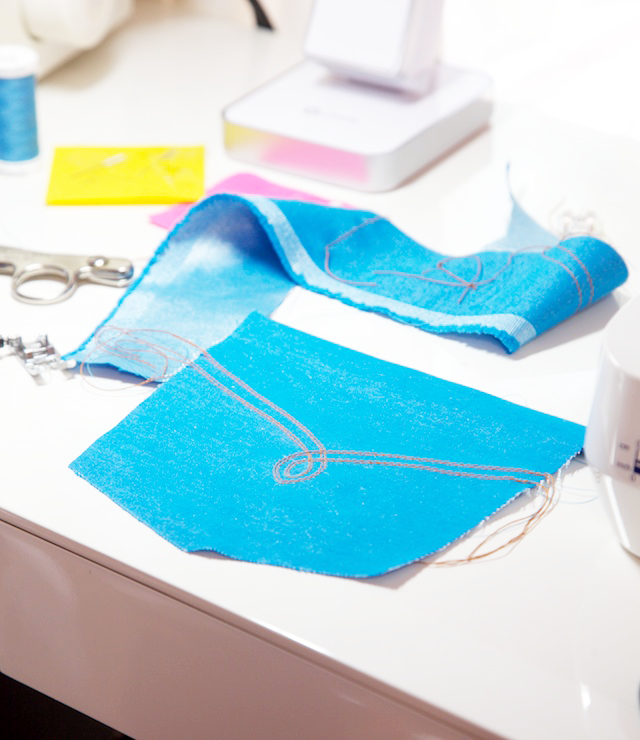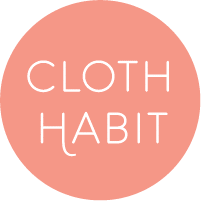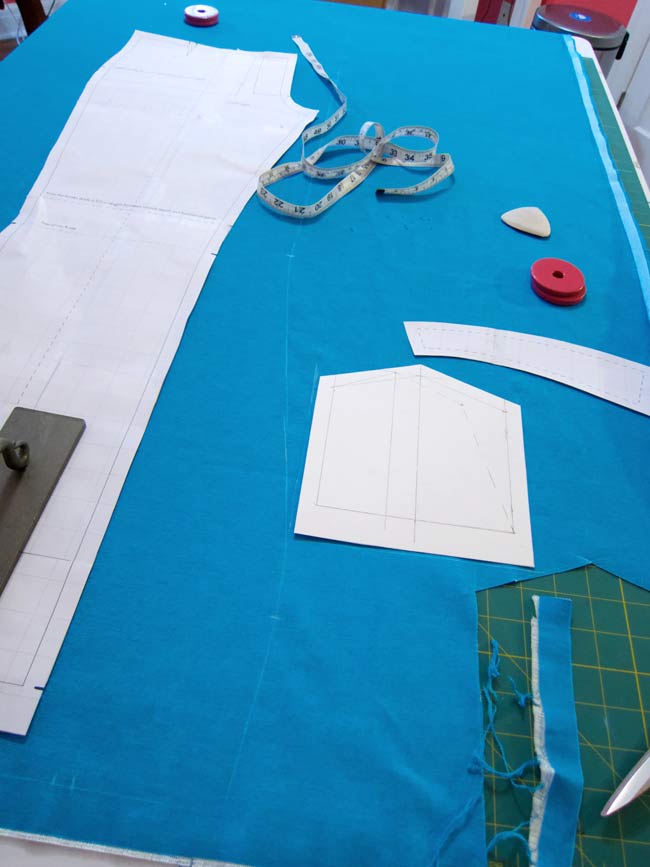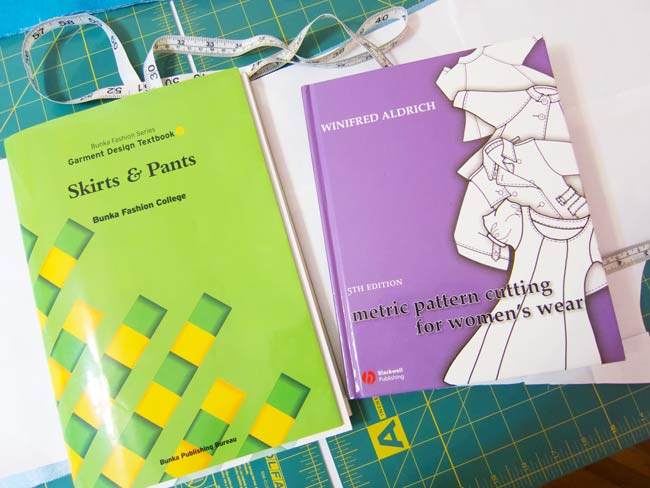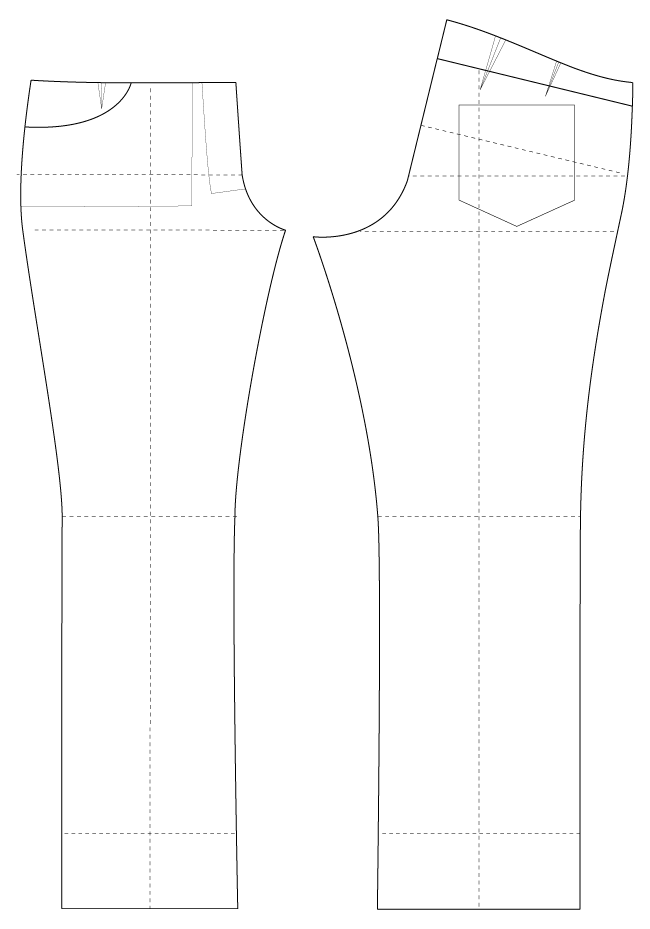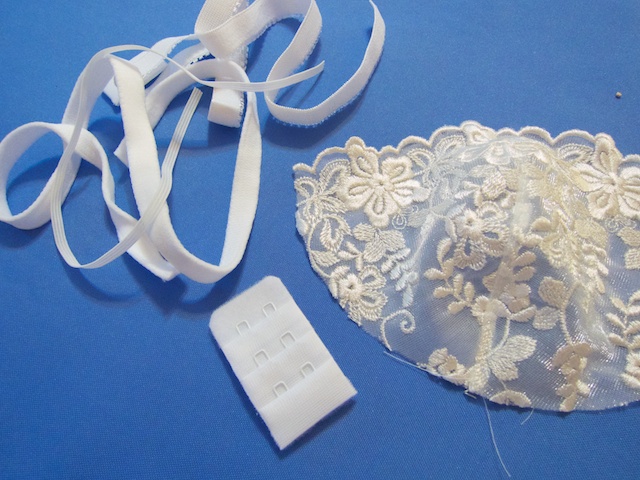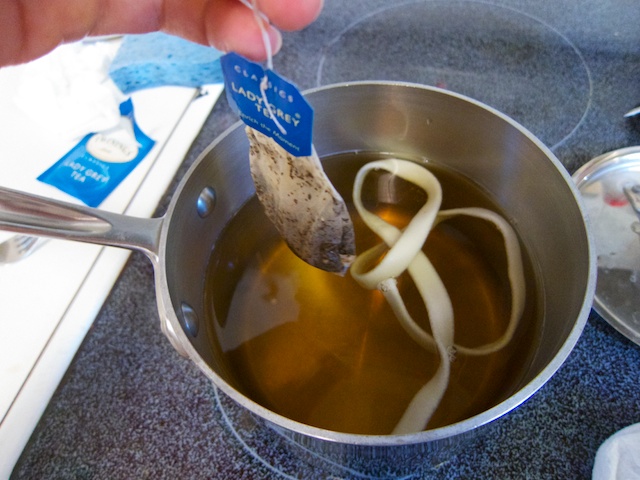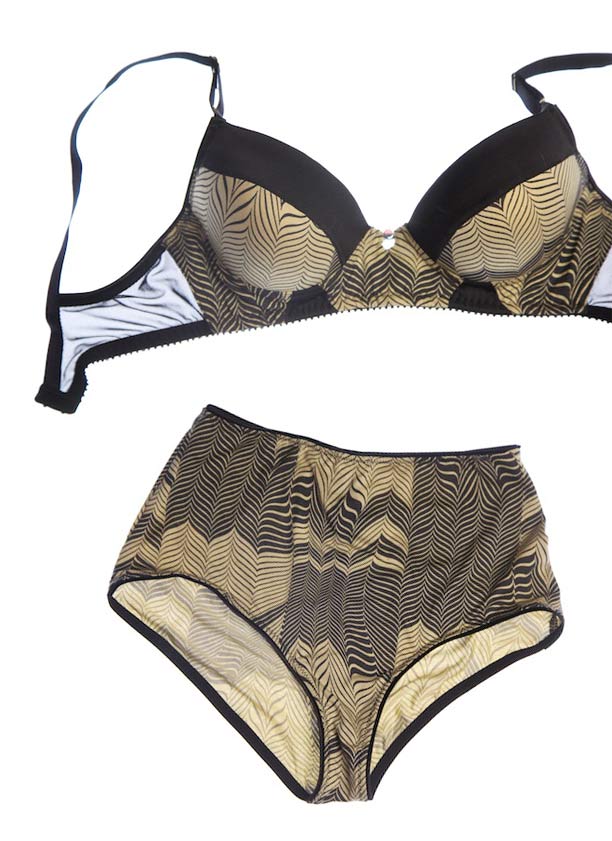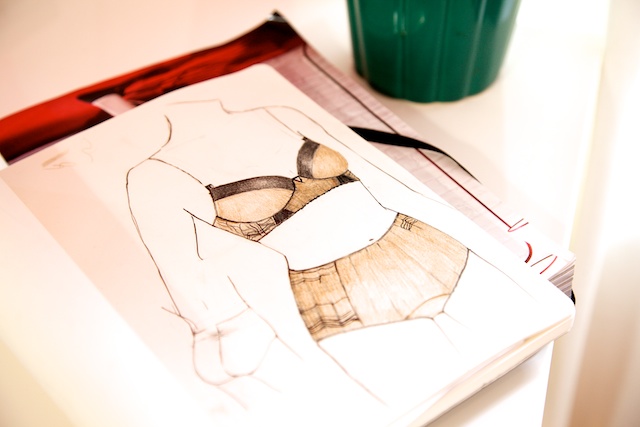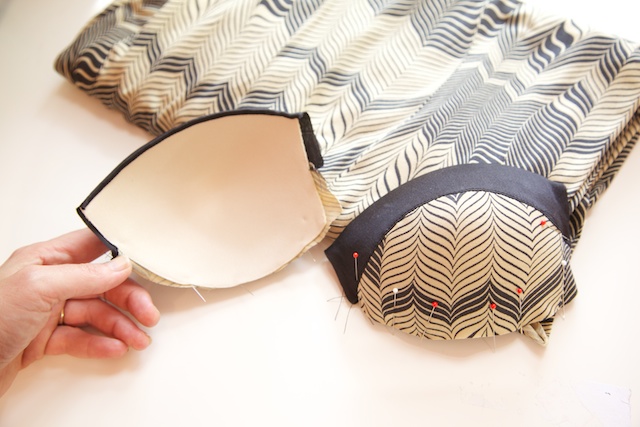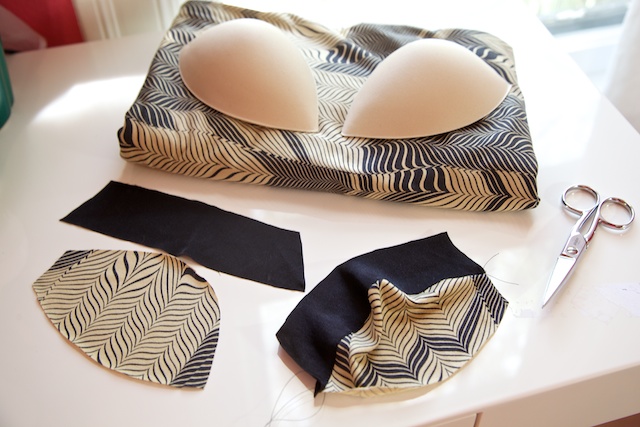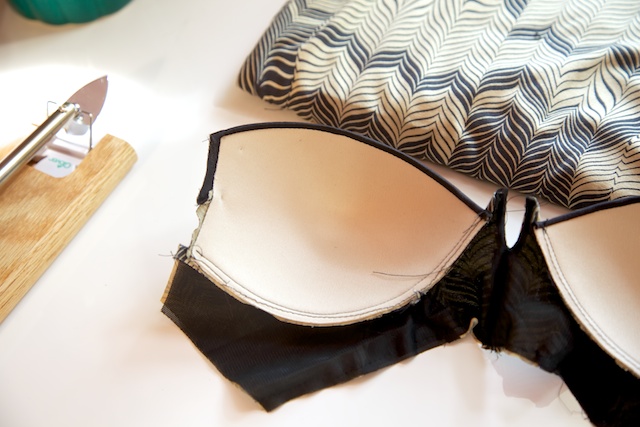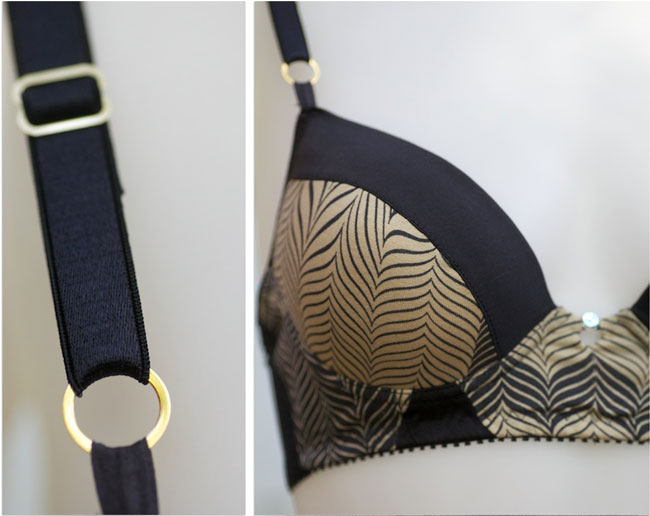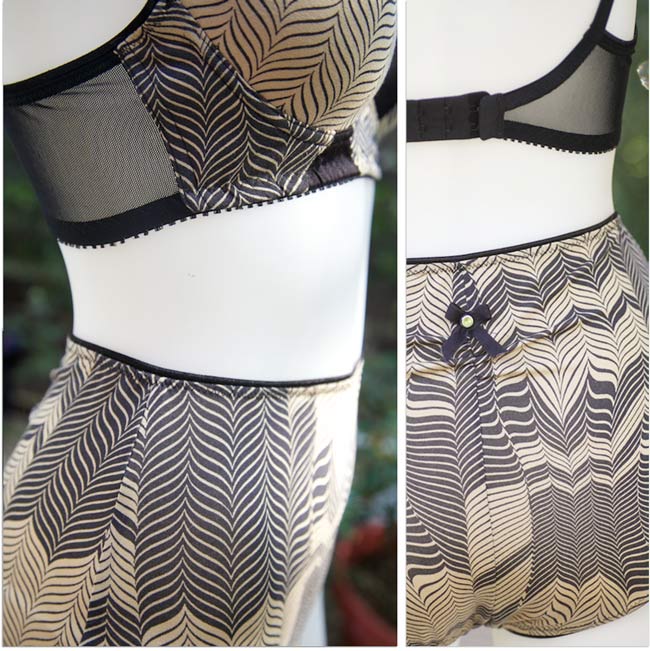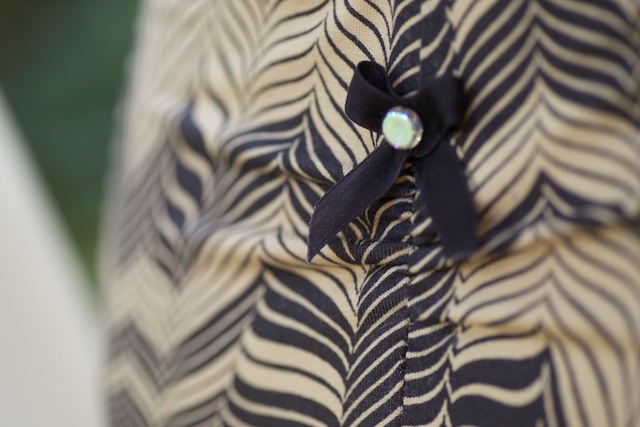I spent a good rainy indoorsy Sunday sewing up and fitting my jeans.
Just for a good laugh, here’s version 1.0:

What is going on with that waistband? you might wonder. It’s a cautionary tale about pattern drafting. I know that I should always measure twice, double-check my calculations. In this case, I drafted the waistline in metric but accidentally added ease in imperial, about three inches too much! Oops. I like to draft in metric as it’s more precise–it’s also what my pattern book used–but I think in imperial. It’s sort of like learning a language; I’m not quite at the point where I dream in metric, so I switch back and forth with my rulers to “translate”.
I took apart my pieces and cut out a version 2.0 with a completely new pattern adjusted to zero ease with a little bit of negative ease in some parts, including the waist. On my first pattern I drafted the hip and thighs with about 2.5cm total ease, which is a really small amount for a non-stretch woven, but this denim has 35% stretch–and it fit like it had almost 10cm of ease. So rather than take in adjustments willy-nilly here and there and everywhere, I figured it was easier to recut.
On version 2.0, some things improved and others seemed to get worse…
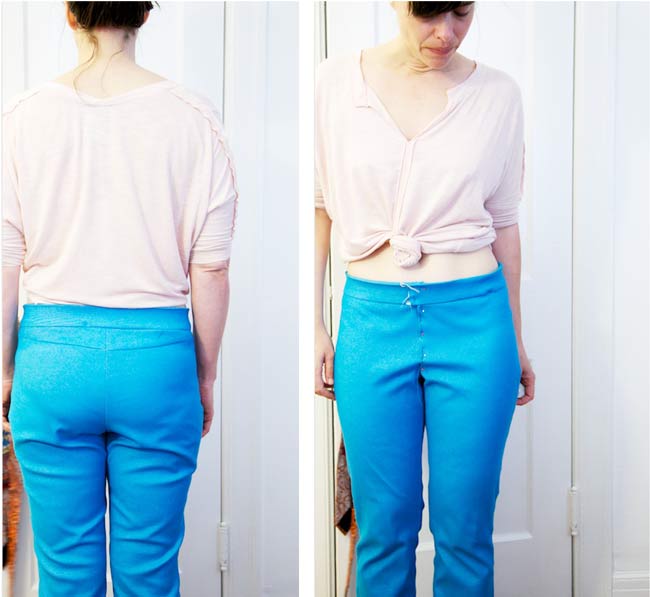
There’s some excess here and there, especially around the seat and the front crotch length. Ahh, that dreaded crotch fit. I have fit this area before with success in pants and shorts, but working with stretch fabric is a different beast. And jeans curves are shaped very differently than other pants. If you have ever examined your RTW jeans you might have noticed that the front fork is often much shorter and the curve is flatter than you think it’s going to be. Really slim stretch jeans and pants often have the inseams and outseams closer to the front around the seat/crotch area than trousers. This could have been my first problem–I used a slim trouser draft that wasn’t specifically for jeans.
But thinking about the differences gave me an idea I want to try but it will have to wait until next weekend.
The glorious mess…
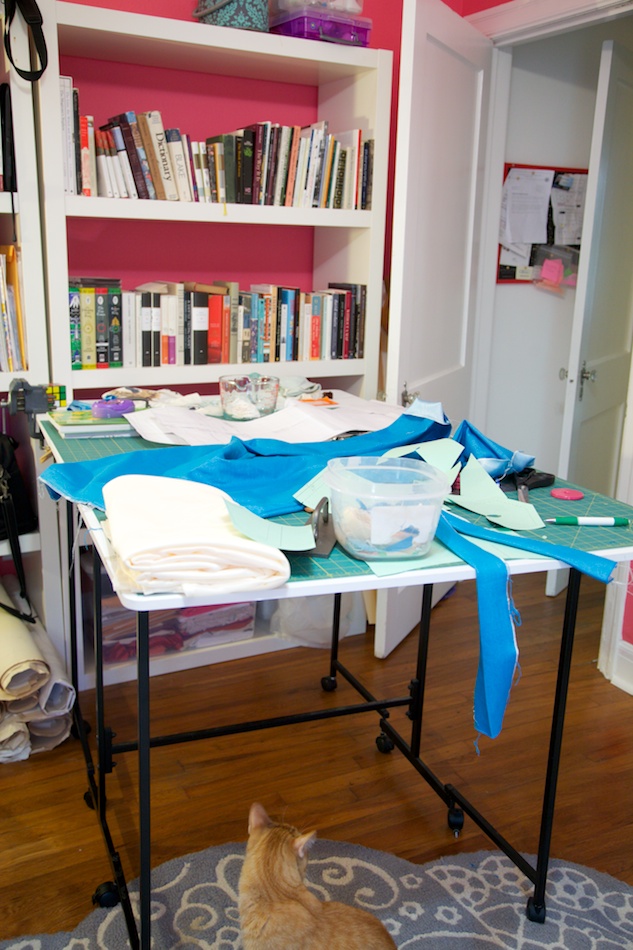
At the bottom is Leo. He snuck in this room overnight and did some kind of happy claw dance on my fabric, which left snags I had to cut around. I think he’s plotting his next move.
So jeans 3.0 will have to wait but at least I got to play with topstitching! (Thanks to readers who suggested that I use regular thread in the bobbin. That really helped.)
